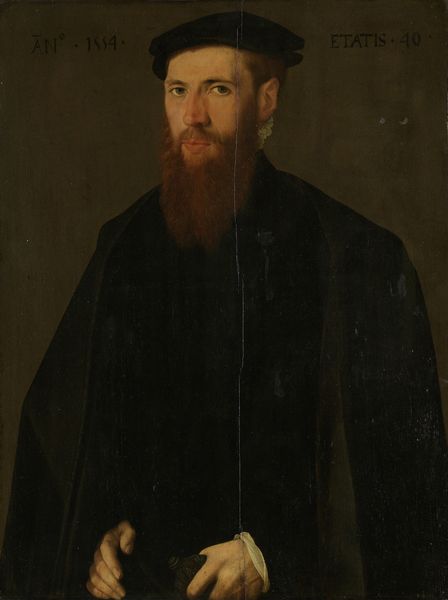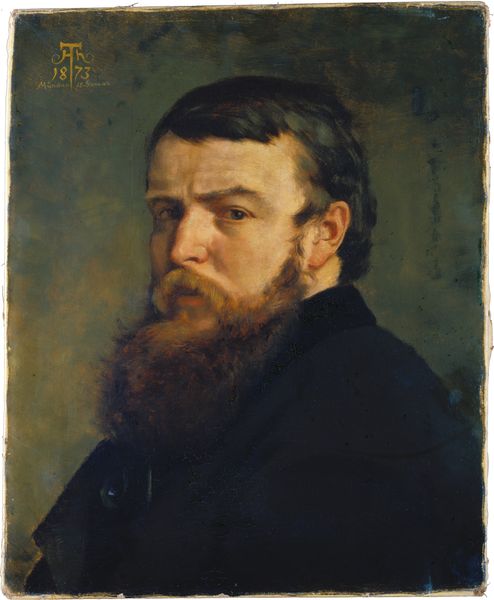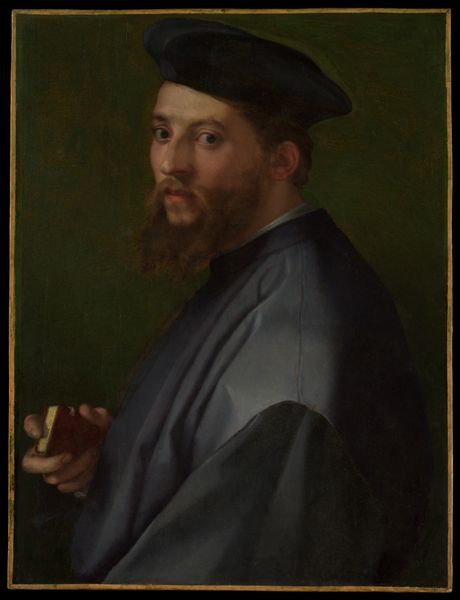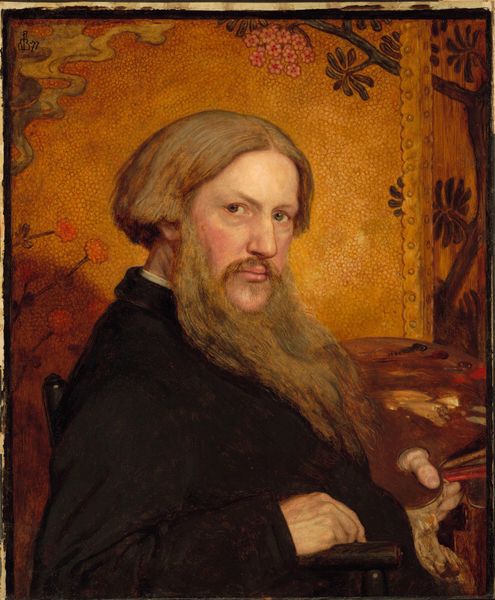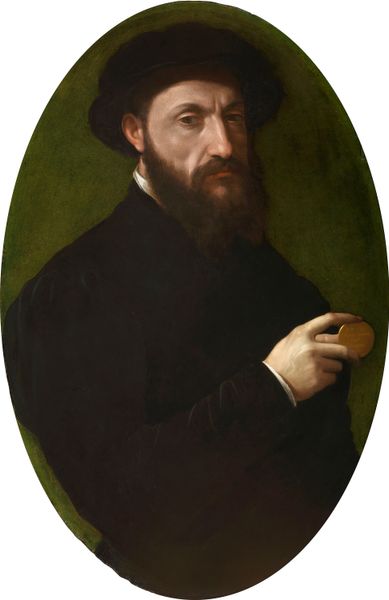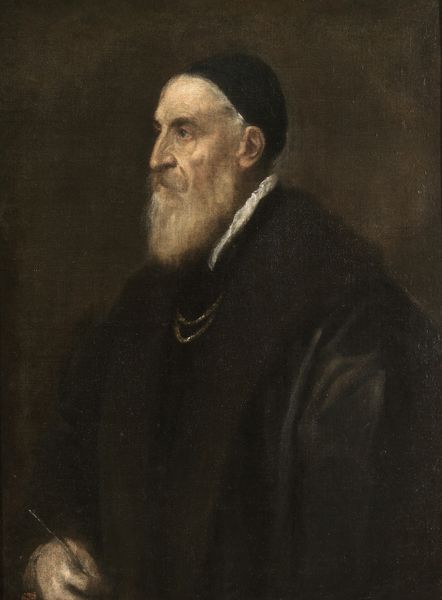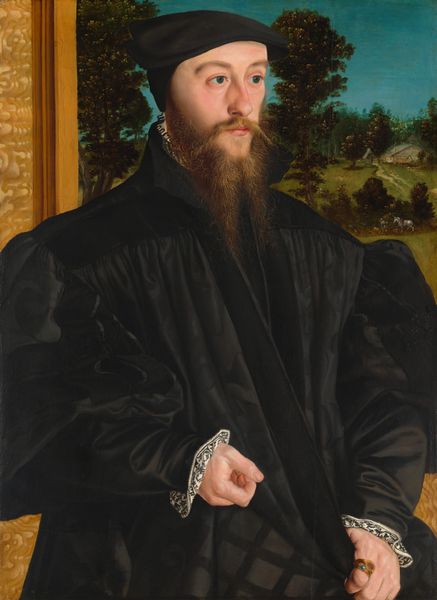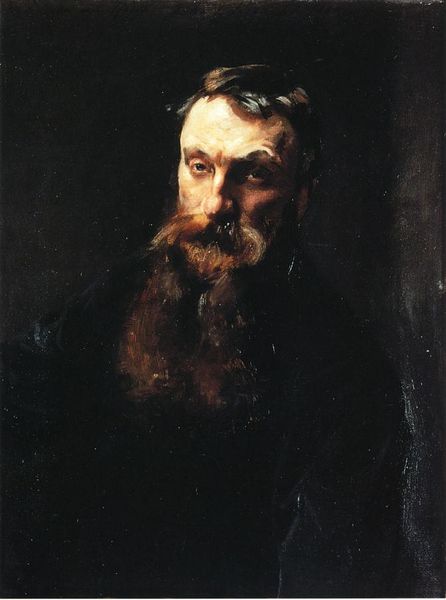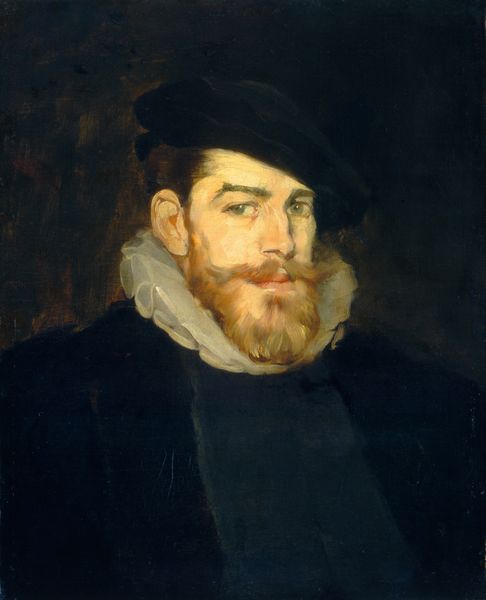
oil-paint
#
portrait
#
oil-paint
#
figuration
#
history-painting
#
italian-renaissance
Copyright: Public domain
Francesco Salviati painted "Cecchino," also known as "Carlo Rimbotti," in Florence during the Renaissance. This portrait exists within a society undergoing significant transformation, where the revival of classical art and humanist thought intersect with evolving notions of identity and representation. In the painting, the sitter holds a book, a symbol that underscores the importance of knowledge and learning which was gaining traction in Renaissance society. The portrait suggests the sitter's engagement with intellectual pursuits, but it also hints at the complex interplay between social status, cultural ideals, and individual identity. The bearded man confronts the viewer with a direct and unflinching gaze. How does Salviati use the artistic conventions of the time to portray not only the sitter's likeness but also something of his inner self? In what ways does this portrait reflect the broader societal shifts and cultural values of Renaissance Florence, and how might it challenge or subvert traditional modes of representation? It’s a powerful reflection on self-perception and social identity during a period of cultural and intellectual change.
Comments
No comments
Be the first to comment and join the conversation on the ultimate creative platform.
